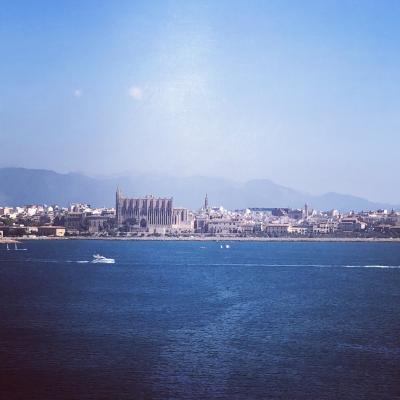How does the Mediterranean climate in Mallorca compare to the Jacaranda tree’s native habitat?
Similar Topics
mediterranean climate mallorca
jacaranda native habitat
mild wet winters
hot dry summers
subtropical tropical regions
drought-resistant trees
jacaranda blooming
humid conditions south
The Mediterranean climate in Mallorca is characterized by mild, wet winters and hot, dry summers, creating an environment that supports a diverse range of plant species. Temperatures generally remain moderate throughout the year, with winter averages rarely dropping below 10°C and summer highs often reaching around 30°C. Rainfall is mostly concentrated in the cooler months, leading to a relatively dry growing season in summer. This climate encourages evergreen shrubs, aromatic herbs, and drought-resistant trees typical of Mediterranean landscapes. The consistent sunlight and well-drained soils provide favorable conditions for plants that have adapted to withstand dry summers and retain moisture efficiently during less rainy months.
In contrast, the Jacaranda tree’s native habitat is primarily subtropical to tropical regions of South America, particularly in countries such as Brazil, Argentina, and Uruguay. These areas tend to have warmer, more humid conditions throughout the year, with a distinct wet season and a shorter, milder dry season. Jacarandas thrive in places where temperatures rarely drop below freezing, and they require sufficient moisture during their growing period to produce their iconic, vibrant purple blossoms. Although the tree can tolerate some drought, it generally prefers more humidity and higher annual rainfall than what is typical in Mallorca’s Mediterranean climate.
Despite these differences, Jacaranda trees have adapted well to Mediterranean climates around the world, including in Mallorca. Their ability to withstand dry summers and mild winters makes them suitable for the island’s conditions. However, the blooms might be less prolific in drier years compared to their native environment, where more consistent rainfall supports lush, dense flowering. Overall, while Mallorca’s Mediterranean climate differs from the Jacaranda’s native subtropical habitat, it provides a complementary setting that allows the tree not only to survive but also to add vibrant color to the island’s landscapes.
In contrast, the Jacaranda tree’s native habitat is primarily subtropical to tropical regions of South America, particularly in countries such as Brazil, Argentina, and Uruguay. These areas tend to have warmer, more humid conditions throughout the year, with a distinct wet season and a shorter, milder dry season. Jacarandas thrive in places where temperatures rarely drop below freezing, and they require sufficient moisture during their growing period to produce their iconic, vibrant purple blossoms. Although the tree can tolerate some drought, it generally prefers more humidity and higher annual rainfall than what is typical in Mallorca’s Mediterranean climate.
Despite these differences, Jacaranda trees have adapted well to Mediterranean climates around the world, including in Mallorca. Their ability to withstand dry summers and mild winters makes them suitable for the island’s conditions. However, the blooms might be less prolific in drier years compared to their native environment, where more consistent rainfall supports lush, dense flowering. Overall, while Mallorca’s Mediterranean climate differs from the Jacaranda’s native subtropical habitat, it provides a complementary setting that allows the tree not only to survive but also to add vibrant color to the island’s landscapes.
